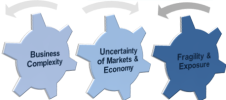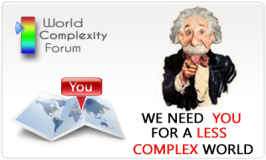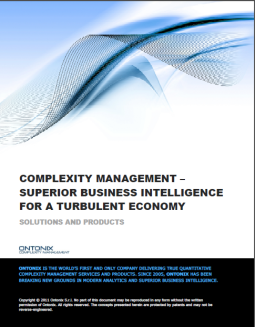Complexity:: Strategy and the ‘threatened’ business model
Monday, 3 June, 2013 Leave a comment
It would be wrong to say that I am in total agreement with the content of this article but that is simply because, courtesy of Ontonix, I hold an ‘informational advantage’! That is because, of course, it is a great deal easier to identify which products, services or aspects of the operation are dragging the model down when you can, objectively, identify sources of internal [endogenous] risk and measure their impact upon the stability [or resilience] of a complex system.
But there is a lot of good stuff that I would highly recommend. Particularly for those readers who have already determined (subjectively) that any downward trend is temporary, a result of ‘bad’ luck/timing, financial volatility or unforeseeable uncertainty. Of course, you may be right but you COULD be wrong and your inaction might only be exacerbating the problem…or accelerating the rate of decline.
I dread to think how much valuable resource is wasted by organisations treating symptoms that are self-generated. John Seddon, a leading ‘Systems Thinker’, talks (with some humour) about the need to address the right problem instead of, inadvertently, creating more "failure demand". It would be fair to say that with an understanding of the complexity of business systems – aided of course by a means to identify and address sources of risk and uncertainty – even the business owners, without whom the organisation may not have come into being, can learn a great deal about a business they feel they know intimately.
But this ‘mistress’ has secrets that will remain hidden unless they are coaxed out…
The Gravity of Risk Can Slowly Crush Business Models
Executives must proactively assess their business model, and do so on a regular basis. What was once a great business engine can grow less viable years later because it has become outdated or ineffective due to market shifts or new developments in industry’s business environmental conditions. It is the course all businesses must run, facing the need to change along the way in order to survive.
Risks are about events that, when triggered, cause problems. Hence, risk identification can start with the source of problems, or with the problem itself. It is important to remember that risks emanate from threats, but the manifestations are much broader and may be internal or external to the organization.















